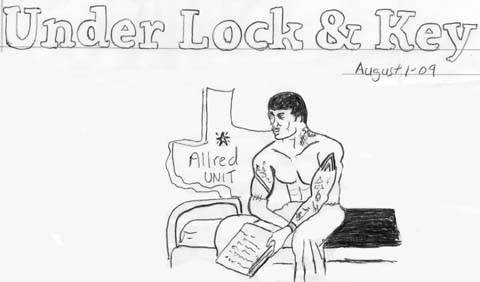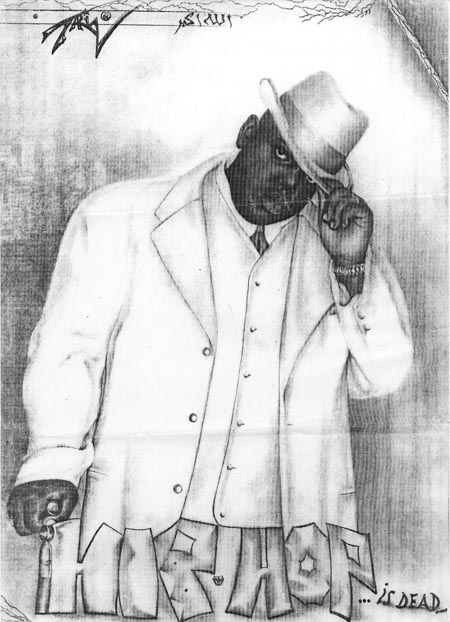
Talk of Early Releases with Economic Crisis

In
ULK 8 we focused
on the economics of u$ prisons, touching on the likelihood of current
economic trends cutting into the bloated government budgets for prisons.
While the topic continues to attract a lot of attention, a
report
on the recently approved budgets for fiscal year 2010 proves to be a bit
of a mixed bag.
Since staffing accounts for 75-80% of “corrections” budgets, staff reductions, pay reductions and closing facilities are the most effective and widespread means of cutting costs. But cutting food, health and programming are also widespread in the new budgets.
Overall, spending is going to go down next year, bucking a quarter-century trend. The report had data from 33 states, and 22 of them are reducing their prison budgets. Since then, the biggest prison state, California, has passed a budget cutting $1.2 billion from the department of corrections (one of the largest percentage cuts across the country). (2) California is also in the interesting position of facing legal pressure to reduce its prison population. Building Serve the People programs to support comrades after release from prison is a more pressing task than ever.
However, MIM(Prisons) is not convinced that this trend will continue, significantly cutting the amerikan imprisonment craze, as some think. This is based on our analysis of the u$ prison system being about social control and not about making money. If unemployment goes up, we predict that amerika will continue to push the strategy of paying one sector of society to imprison and rule over another.
As we have explained in ULK9, there are no profits to be made in operating prisons. Like all military and oppressive forces of the state, these are completely non-productive, parasitic operations. Unlike a capitalist industry that tends to minimize labor costs relative to other capital costs, these parasitic operations are set up to distribute fat paychecks to those most loyal to the imperialist system. Hence spending 80% of the budget on staffing.
To put the numbers in some perspective, the $52 billion spent in 2008 on state prisons in the united $tates is equivalent to the the Gross Domestic Product of Afghanistan and Nepal combined, for the same year. (3) That’s over 50 million people who must run two whole countries on the same amount of resources provided to the 430,000 amerikans employed in “corrections” to run a population of 2.3 million prisoners. (4)
notes:
(1) Scott-Hayward, Christine S. The Fiscal Crisis in
Corrections: Rethinking Policies and Practices. July 2009.
http://www.vera.org
(2)
Office of the Governor.
7/28/2009
Corrections
and Rehabilitation Budget Detail
(3)
CIA
World Factbook.
(4)
Bureau of Labor
Statistics.
Related Articles:





 Alabama
Alabama
 Alaska
Alaska
 Arizona
Arizona
 Arkansas
Arkansas
 Army Post
Army Post
 California
California
 Colorado
Colorado
 Connecticut
Connecticut
 Delaware
Delaware
 District of Columbia
District of Columbia
 Federal
Federal
 Florida
Florida
 Georgia
Georgia
 Guam
Guam
 Hawaii
Hawaii
 Idaho
Idaho
 Illinois
Illinois
 Indiana
Indiana
 Iowa
Iowa
 Kansas
Kansas
 Kentucky
Kentucky
 Louisiana
Louisiana
 Maine
Maine
 Maryland
Maryland
 Massachusetts
Massachusetts
 Michigan
Michigan
 Minnesota
Minnesota
 Mississippi
Mississippi
 Missouri
Missouri
 Montana
Montana
 Nebraska
Nebraska
 Nevada
Nevada
 New Hampshire
New Hampshire
 New Jersey
New Jersey
 New Mexico
New Mexico
 New York
New York
 North Carolina
North Carolina
 North Dakota
North Dakota
 Ohio
Ohio
 Oklahoma
Oklahoma
 Oregon
Oregon
 Pennsylvania
Pennsylvania
 Puerto Rico
Puerto Rico
 Rhode Island
Rhode Island
 South Carolina
South Carolina
 South Dakota
South Dakota
 Tennessee
Tennessee
 Texas
Texas
 Utah
Utah
 Vermont
Vermont
 Virginia
Virginia
 Washington
Washington
 West Virginia
West Virginia
 Wisconsin
Wisconsin
 Wyoming
Wyoming

 Greetings
to all my brothers and sisters and political prisoners. I want to
encourage all comrades to promote educational thinking. My cellmate, who
is a Crip, took time out of his schedule to teach me how to count. Yes,
count. I dropped out of high school in the 9th grade to only have to
come to prison and learn math. I’m 37 and my celly is 28. He encouraged
me and pushed me to use my mind. We have had our ups and downs inside
this cell which is in a high security unit.
Greetings
to all my brothers and sisters and political prisoners. I want to
encourage all comrades to promote educational thinking. My cellmate, who
is a Crip, took time out of his schedule to teach me how to count. Yes,
count. I dropped out of high school in the 9th grade to only have to
come to prison and learn math. I’m 37 and my celly is 28. He encouraged
me and pushed me to use my mind. We have had our ups and downs inside
this cell which is in a high security unit.
 Hip
hop culture began in the late 1970s, but it wasn’t until the middle to
late 1980s that the cultural life and expression of hip hop began to
grow and influence youth throughout amerika and the world. Many people
wrote this phenomena of hip hop culture as some fad that would soon
wither away.
Hip
hop culture began in the late 1970s, but it wasn’t until the middle to
late 1980s that the cultural life and expression of hip hop began to
grow and influence youth throughout amerika and the world. Many people
wrote this phenomena of hip hop culture as some fad that would soon
wither away.